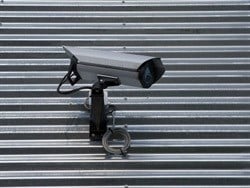Video evidence in arbitration proceedings must be authentic and relevant

A commissioner in arbitration proceedings is therefore not bound by the strict rules of evidence.
Video recordings are admissible in arbitration proceedings provided there are witnesses who are able to identify the contents of the video, explain the relevance of such contents and perform as an expert (regarding the lack of manipulation of the video, etcetera). The evidence will then be admissible if it is relevant, authentic and subject to interpretation by a witness for the proceedings.
The courts have cautioned against the uncritical use of video evidence on the basis that there are inherent risks in the use of such footage. Such inherent risks include the fact that the camera operator may be selective in what he/she records; there may be interruptions in the recording; and recordings may be altered.
Accordingly, arbitrators may exercise a cautious approach in admitting and relying on video evidence. It is therefore important that a party wishing to have such evidence admitted be able to prove both its authenticity and relevance.
Provisions required
An employer who has obtained video evidence of an employee committing an offence and who wishes to use such video footage as evidence in support of its case against the employee may do so provided that the video submitted into evidence is clear to view, the audio is clear to hear, and the video footage is authentic, i.e. has not been tampered with in any way.
In this regard it would be necessary to show that the video has not been tampered with by ensuring that all requirements for validating the video evidence are complied with by the party relying on it. In the case of S v Ramgobin 1986 (4) SA 117 (N) it was held that if the video footage is in dispute it would have to be authenticated by a person who can testify that the video is a true representation of the objects and persons which they purport to represent and that the video footage was not altered or interfered with in anyway in order to be admissible.
Thus, it is critical that the person who made the recording or supervised the recording should testify about the origin of the footage when it is tendered in evidence.
The 'chain of custody' of the video recording should also be documented and witnesses must be able to testify as to the sanctity of this chain of custody so as to prove that the recording was not tampered with. This may include testimony as to:
- how the images were captured;
- when, where and how the images were stored;
- who had access to the images from the time they were recorded until the time they were produced as evidence; and
- details of whether and how any enhancements have been done.
As reflected in the case of Moloko v Commissioner Diale & Others (2004) 25 ILJ 1067 (LC), where the employee denies the content of the video footage, it must be established that the video footage presented is the same as when it was captured and that there has been no opportunity for it to have been altered before the evidence can be admitted.
Relevance to dispute
A further requirement for the consideration of video evidence is that the evidence is relevant to the dispute. Video evidence is considered to be real evidence and a witness would need to clarify the relevance of the production of such evidence. Thus, someone would have to testify what the footage is of, when it was taken and where and why it is relevant to the issue before the arbitrator. Whoever identifies the subject matter of or the person(s) in the footage should have direct knowledge of the subject matter or persons recorded.
In Afrox Ltd v Laka and Others (1999) 20 ILJ 1732 the Labour Court found that the arbitrator's decision to disallow video footage was grossly irregular as the evidence that the employer wanted to use was relevant to the case at hand.
Employers who wish to use video evidence in arbitration proceedings must be able to prove its authenticity and relevance. In this respect, witnesses ought to be called who can testify as to the type of camera used, when it operates, how the video footage is recorded and stored, how it is viewed and interpreted and by whom, when the event took place which is recorded, how that date and time can be established and that the footage shown at the arbitration is the same as the footage recorded at the time (i.e. it has not been edited, enhanced, amended etc.).
Furthermore, a witness who can positively identify the person/s captured in the video footage should be called to testify at the hearing. That person must know the name and appearance of the persons who appear in the footage concerned. Finally, although this is not a requirement, it is suggested that notice be given to the CCMA and other parties to the dispute that it is intended that video footage will be relied upon.
About Jacques van Wyk
- UIF parental benefits effective... but what about paternity leave? - 4 Nov 2019
- When completion of probation doesn't automatically mean permanent placement... - 12 Sep 2019
- Should reinstatement always be awarded after unfair dismissal? - 14 Aug 2019
- Will the Labour Court enforce an employee claim against a company in business rescue? - 1 Aug 2019
- Can unions claim organisational rights after recruiting ineligible members? - 25 Jul 2019
View my profile and articles...